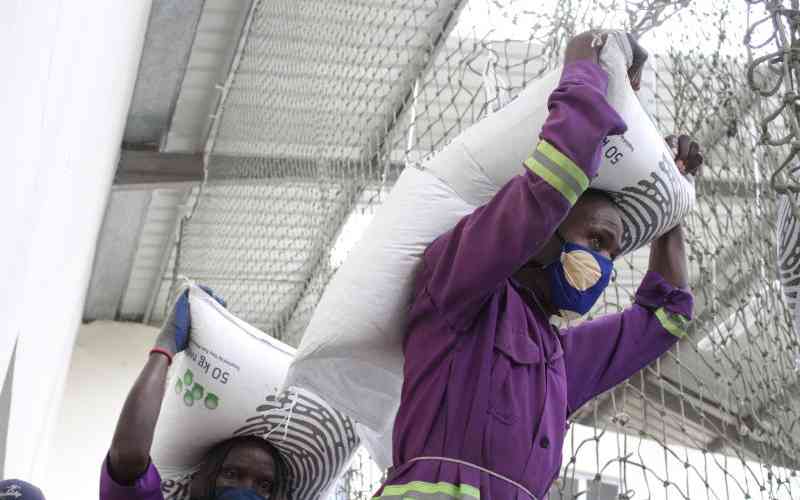Jeckonia otieno
From outside, the building appears old and can be bypassed just as another shop facing the beach. But the high stonewalls are so strong that not even the tsunami that hit the Indian Ocean a few years ago could scathe it.
This is the House of Columns in Malindi that was an Indian trader’s shop before it changed hands and finally became a museum. The three-storey building that currently houses the Malindi Museum has also been a residential house, a hospital and even the Fisheries Department.
The house was built by Adulhussein Gulamhussein & Co and, although the dates of its construction are not clear, it is believed to have been in existence by 1891. This belief is founded on the fact that W W Fitzgerald took a photo of it as he was aboard a coasting steamer belonging to the Imperial British East African Company.  |
Built more than a century ago, the House of Columns still stands tall and now houses the Malindi Museum. Although it is a museum, the House of Columns serves better as a library. [PHOTOS: JECKONIA OTIENO/STANDARD] |
Fitzgerald was touring the coast to survey its agricultural potential. When he arrived in Malindi on July 15, 1891 and stayed with Bell Smith, the officer in charge of Malindi District, he wrote in Travels in East Africa: "His house was a white two-storey building on the beach and was conspicuous from the sea."
The House of Columns was the first native hospital for the people of Malindi. In an autobiography, Tom Alfree notes that he bought the building for £2,000 (Sh264,000) from the Bohora community.
The building later became the offices of the Game Department before the Wildlife Conservation and Management Department occupied it. Kenya Wildlife Service (KWS) later took over the building, but the Range Management and Livestock Development offices continued occupying the ground floor.
This was until the Malindi Museum Society requested Richard Leakey, the then director of KWS, to have the historical building handed over to the National Museums of Kenya.
Therefore, the building came under the National Museums of Kenya in 1999. However, it was quite dilapidated and was renovated to give it a fresh look while at the same time maintaining its antique qualities. The operation to give it a facelift began in 2002 through funds from the National Museums of Kenya and the German Embassy.
At the end of 2003, the House of Columns opened as a museum, but started exhibiting occasionally in May 10, 2004. Currently, it is a full museum operating throughout the week from 8am to 6pm, including public holidays.
The building has nine rooms, one of them being the Webb Library, which is free and is usually flocked by students and adults.
According to Doris Kamuye, a librarian who has worked in the museum since 2004, the building also serves better as a library.
The museum has ample seating space and the library on top can comfortably host 35 visitors, but during the school holidays, the capacity rises to 66. It is actually one of the two public libraries in Malindi.
Stay informed. Subscribe to our newsletter
Malindi town itself boasts of a rich cultural heritage alongside some of the oldest towns along the east coast of Africa. Britain might have its House of Commons, but Kenya also has its own unique house — the House of Columns.
 The Standard Group Plc is a
multi-media organization with investments in media platforms spanning newspaper
print operations, television, radio broadcasting, digital and online services. The
Standard Group is recognized as a leading multi-media house in Kenya with a key
influence in matters of national and international interest.
The Standard Group Plc is a
multi-media organization with investments in media platforms spanning newspaper
print operations, television, radio broadcasting, digital and online services. The
Standard Group is recognized as a leading multi-media house in Kenya with a key
influence in matters of national and international interest.
 The Standard Group Plc is a
multi-media organization with investments in media platforms spanning newspaper
print operations, television, radio broadcasting, digital and online services. The
Standard Group is recognized as a leading multi-media house in Kenya with a key
influence in matters of national and international interest.
The Standard Group Plc is a
multi-media organization with investments in media platforms spanning newspaper
print operations, television, radio broadcasting, digital and online services. The
Standard Group is recognized as a leading multi-media house in Kenya with a key
influence in matters of national and international interest.






